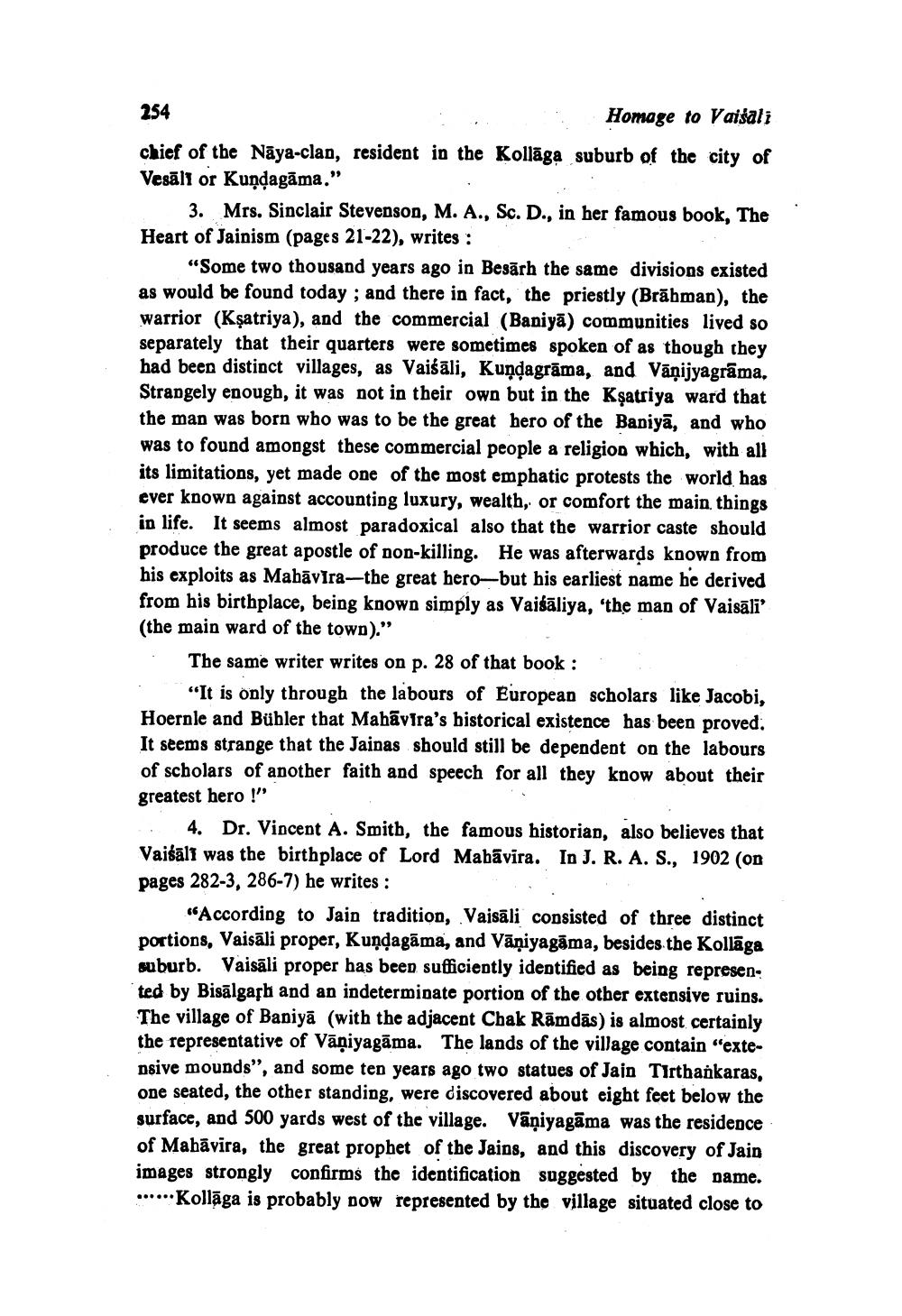________________ 254 Homage to Vaisali chief of the Naya-clan, resident in the Kollaga suburb of the city of Vesali or Kundagama." 3. Mrs. Sinclair Stevenson, M. A., Sc. D., in her famous book, The Heart of Jainism (pages 21-22), writes : "Some two thousand years ago in Besarh the same divisions existed as would be found today; and there in fact, the priestly (Brabman), the warrior (Ksatriya), and the commercial (Baniya) communities lived so separately that their quarters were sometimes spoken of as though they had been distinct villages, as Vaisali, Kundagrama, and Vanijyagrama, Strangely enough, it was not in their own but in the Ksatriya ward that the man was born who was to be the great hero of the Baniya, and who was to found amongst these commercial people a religion which, with all its limitations, yet made one of the most emphatic protests the world has ever known against accounting luxury, wealth, or comfort the main things in life. It seems almost paradoxical also that the warrior caste should produce the great apostle of non-killing. He was afterwards known from his exploits as Mabavira-the great hero-but his earliest name he derived from his birthplace, being known simply as Vaisaliya, 'the man of Vaisali' (the main ward of the town)." The same writer writes on p. 28 of that book : "It is only through the labours of European scholars like Jacobi, Hoernle and Bubler that Mahavira's bistorical existence has been proved. It seems strange that the Jainas should still be dependent on the labours of scholars of another faith and speech for all they know about their greatest hero !" ... 4. Dr. Vincent A. Smith, the famous historian, also believes that Vaisali was the birthplace of Lord Mabavira. In J. R. A. S., 1902 (on pages 282-3, 286-7) he writes : "According to Jain tradition, Vaisali consisted of three distinct portions, Vaisali proper, Kundagama, and Vaniyagama, besides the Kollaga suburb. Vaisali proper has been sufficiently identified as being represen. ted by Bisalgaph and an indeterminate portion of the other extensive ruins. The village of Baniya (with the adjacent Chak Ramdas) is almost certainly the representative of Vaniyagama. The lands of the village contain "extensive mounds", and some ten years ago two statues of Jain Tirthankaras, one seated, the other standing, were discovered about eight feet below the surface, and 500 yards west of the village. Vaniyagama was the residence of Mahavira, the great prophet of the Jains, and this discovery of Jain images strongly confirms the identification suggested by the name. ...... Kollaga is probably now represented by the village situated close to




